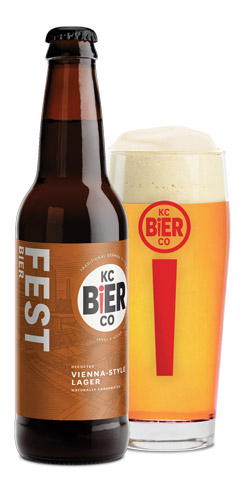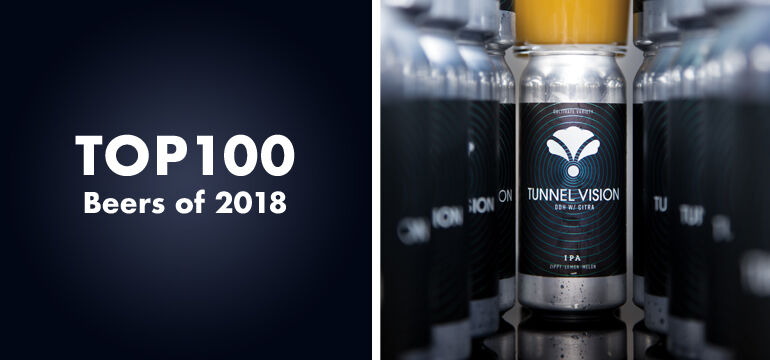Start 14-Day Trial Subscription
*No credit card required

Top 100 Beers of 2018
#10

96
by James Link
Festbier
KC Bier Co.

Head Brewer and Partner Karlton Graham Talks Festbier
Who was responsible for this beer’s recipe?
I was primarily responsible for the recipe that created this version of our Festbier. However, a very strong assist goes to our founder and managing partner, Steve Holle. Without his vision to brew German-style beer using imported ingredients and traditional brewing methods, I never would have been in the position to refine a Festbier to such a high level.
What sets this beer apart from other examples within the style?
Altogether, I think this beer has such a highly authentic flavor (and is offered to our customers so much fresher than other examples that can be found) that even people who don’t know the style of beer in general very well react very positively to it. A lot of people drink it for the first time and instinctively knew that this was a high-quality beer at the peak of freshness.
What makes this beer truly world class?
100 percent German malt, hops and a yeast strain from a renowned German brewery, decoction mashing, natural carbonation, cold fermentation, and four weeks of lagering make for a classic German-style lager. To save time and money, people sometimes consider taking one shortcut because no one will notice; then they take another and another and, in the end, the beer’s flavor dies a slow death from a thousand small cuts.
What is your favorite aspect of this beer (flavor, aroma, mouthfeel, etc.)?
The best aspect of this beer is that if you really know this style of beer and something about traditional German brewing techniques, I believe you can truly taste that our Festbier is made with German malt and hops, decocted and naturally carbonated. You just simply cannot make a German lager that tastes just right without making it the German way and with German ingredients. This seems like a self-evident statement, but for some reason, very few American craft brewers go to the effort.
How popular is this beer among your faithful fans?
This beer went over so well upon its launch that we ended up making more of it as our fall seasonal after its launch to keep up with demand from our distributors. Initial orders for this beer were eventually doubled in the end. There were several prominent social media comments about its outstanding flavor, and reception at our annual Oktoberfest celebration was very positive. It’s nice to see that if you make truly outstanding beer, people will talk about it and you really can see sales grow.
What’s a good food pairing for this beer?
The most popular food at Oktoberfest, ein halbes Hendel, which is a rotisserie-roasted half chicken.
Judge’s Second Opinion
KC Bier Co. of Kansas City, Missouri has gone to exhausting efforts to bring us their quality Vienna-style Fest Bier. Vienna Lager was the original bottom-fermenting beer first introduced by Austrian Anton Dreher in 1840/1841 after a lengthy study tour of breweries throughout Germany and England.
Traditional German Pilsner and Vienna malts utilized here create a base that marries nicely with German noble hops and a special Bavarian monastic yeast strain that rounds out the flavor profile. The labor-intensive brewing technique
of decoction mashing, which is seldom used in modern brewing, is not spared here and makes a strong presence via the complex and engaging malt character.
The final steps to brewing this beer include a six-week lagering period followed by a natural conditioning process that cuts down on the beer’s carbonic bite and smooths out the mouthfeel considerably.
It should also be noted that this beer adheres strictly to the Reinheitsgebot (The German beer purity law of 1516), which further maintains the style’s originality and KC Bier Co.’s credibility.
Considering the care and effort in creating this traditional example of the Vienna Lager style, it is of little wonder that the end result was a beer of high quality and one that would have made its creator Anton Dreher proud.
This is a beer style that has stood the trials of time for more than 178 years and credit should be given to the brewer in helping to preserve it and present it in its original form to the twenty-first century. – James Link



